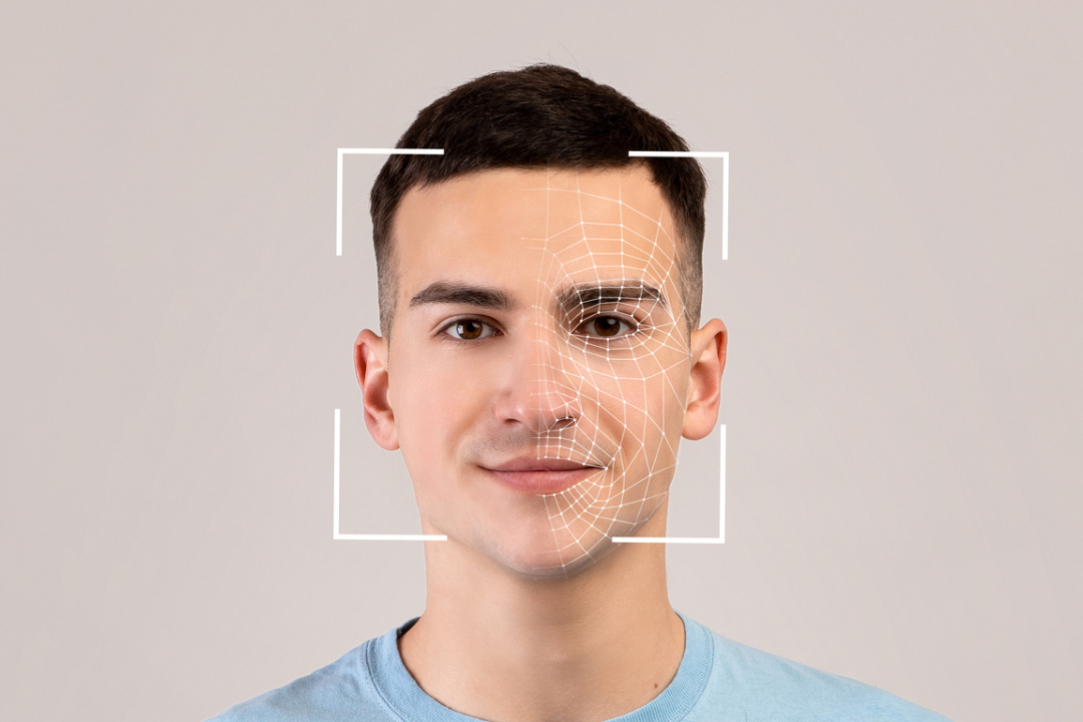Neuroscientists from HSE University Learn to Predict Human Behaviour by Their Facial Expressions

Willingness to donate to charity is written all over the face.
Researchers at the Institute for Cognitive Neuroscience at HSE University are using automatic emotion recognition technologies to study charitable behaviour. In an experiment, scientists presented 45 participants with photographs of dogs in need and invited them to make donations to support these animals. Emotional reactions to the images were determined through facial activity using the FaceReader program. It turned out that the stronger the participants felt sadness and anger, the more money they were willing to donate to charity funds, regardless of their personal financial well-being. The study was published in the journal Heliyon.
The research was supported by a mega-grant from the Russian government as part of the national project ‘Science and Universities.’
Charitable behaviour is a complex psychological process with motives that are not fully understood. Emotional state is one of the key factors influencing the willingness to give one's resources to another. However, the question of how specific emotions are related to donations remains a subject of debate, as previous studies on this topic have yielded conflicting results.
One of the main reasons is methodological limitations in data collection. Most studies on charitable behaviour use subjective methods: volunteers themselves report their emotions and how they affect donations. However, participants do not always understand their feelings or are not willing to speak about them openly. Moreover, depending on the direction of charitable activity (helping sick people, helping animals, supporting environmental initiatives, and others), the same emotions can differently influence the willingness to donate. Therefore, to develop effective charity advertising, it is important to have objective data on the influence of emotions on the willingness to donate, taking into account the goals of fundraising.
Researchers Anna Shepelenko, Vladimir Kosonogov, and Anna Shestakova from the HSE Institute for Cognitive Neuroscience were the first in the world to use an automatic emotion recognition program to evaluate the effectiveness of charity appeals. In the experiment, scientists used FaceReader to record the facial expressions of volunteers while viewing photos of dogs in various conditions, including homeless, domestic, sick, healthy, adult, and puppies. Participants were given 320 rubles, which they could fully or partially donate to the animal aid fund during the experiment. The remaining amount could be kept for themselves.
Dogs were specifically chosen for the study because society's attitude towards them is ambiguous: they can be perceived as both victims and threats. In these conditions, charity appeals can evoke contradictory or hidden emotions that are difficult to detect through surveys or focus groups but can be recognised by facial expressions.

Co-author of the study, Junior Research Fellow at the Centre for Cognition & Decision Making at the Institute for Cognitive Neuroscience, HSE University
Currently, affective computing is still in the early stages of its development and is not widely used in the industry. However, in the coming years, its widespread implementation in various business and scientific fields can be expected. Technologies like FaceReader are already being used for diagnosing mental disorders, improving the quality of online education, assessing customer satisfaction, and in some other areas. Our study clearly shows the prospects of using affective computing to predict the effectiveness of social advertising, creating a basis for further research and practical application.
The main results of the study showed that people are inclined to donate more when charity appeals provoke unpleasant emotions in them. In particular, participants gave larger amounts to animals whose images evoked sadness and anger. These results are confirmed by both self-reports of emotions and affective computing data.
At the same time, for some other emotions, researchers found differences between survey data and FaceReader data. According to self-reports, surprise, disgust, and fear also contributed to increased donations, but FaceReader data did not confirm this. According to the authors, these differences may have arisen due to the timing of emotion recording: the program analysed reactions during the first presentation of pictures and immediately before the donation decision, whereas self-reports were made after a second viewing of the images. This time gap could have changed participants' perception of their emotions.
Additionally, the formulation of questions about specific emotions could have caused cognitive biases and influenced respondents' answers so that they indicated not only the emotions they experienced but also those they considered appropriate depending on the context of the image. Based on this, researchers conclude that affective computing complements self-report data, allowing for a more accurate identification of emotions at the moment of decision-making and reducing the influence of experimental procedures or cognitive biases on research results.
It is noteworthy that donations were associated with the individual perception of the value of money: the higher the subjective significance of the reward for participating in the experiment (320 rubles), the less willing participants were to donate to charity, while their personal level of financial well-being did not affect the amount of donations. This data clarifies the results of earlier publications, which showed contradictions regarding the relationship between financial well-being and the willingness to make donations.
Co-author of the study, Junior Research Fellow at the Centre for Cognition & Decision Making at the Institute for Cognitive Neuroscience, HSE University
This study contributes to the understanding of charitable behaviour, and we hope that the obtained results will be useful for non-profit organisations. At the same time, it is important to note some limitations: our results do not take into account the long-term impact of charity advertising on the audience.
Indeed, unpleasant emotions can increase the amount of donations during initial contact, but regularly repeated negative charity appeals can provoke empathy fatigue or avoidance—people may simply exclude such messages from their information field. Thus, to further study the impact of emotions on charity, longitudinal studies should be conducted, in which changes in donors' behaviour can be registered over several months or even years.
See also:
Russian Scientists Integrate Microdisk Laser and Waveguide on a Single Substrate
A group of Russian scientists led by Professor Natalia Kryzhanovskaya at HSE Campus in St Petersburg has been researching microdisk lasers with an active region based on arsenide quantum dots. For the first time, researchers have successfully developed a microdisk laser coupled with an optical waveguide and a photodetector on a single substrate. This design enables the implementation of a basic photonic circuit on the same substrate as the radiation source (microlaser). In the future, this will help speed up data transfer and reduce equipment weight without compromising quality. The study results have been published in Semiconductors.
Scientists Disprove Bunkbed Conjecture
Mathematicians from Russia, including two HSE graduates, have disproven a well-known mathematical conjecture that, despite lacking solid proof, had been considered valid for 40 years. The ‘Bunkbed Conjecture’ belongs to percolation theory—a branch of mathematics that studies the formation of connected structures in independent environments.
Men Behind the Wheel: Three Times More Violations and Accidents than Women
Men are three times more likely than women to commit traffic violations while driving and to be involved in accidents. Moreover, they are more likely to create situations on the road that are highly dangerous to others. Men are also twice as likely to drive under the influence and nearly one-third more likely to receive a prison sentence for reckless driving. Perhaps it comes down to cultural norms and the different attitudes men and women have toward driving. These are the conclusions reached by Anton Kazun, Assistant Professor at the HSE Faculty of Economic Sciences, and Research Assistant Mikhail Belov.
HSE Scientists Discover How to Predict Charitable Behaviour Through Physiological Reactions
Researchers at the HSE Institute for Cognitive Neuroscience have investigated how the emotional impact of advertising affects the amount people willing to donate to support animal welfare. To accomplish this, the researchers measured physiological responses such as heart rate, electrodermal activity, and facial expressions in individuals viewing various photos of dogs. The findings indicate that willingness to donate is most accurately predicted by heart rate and facial muscle activation. The study has been published in Social Psychology.
'We Are Creating the Medicine of the Future'
Dr Gerwin Schalk is a professor at Fudan University in Shanghai and a partner of the HSE Centre for Language and Brain within the framework of the strategic project 'Human Brain Resilience.' Dr Schalk is known as the creator of BCI2000, a non-commercial general-purpose brain-computer interface system. In this interview, he discusses modern neural interfaces, methods for post-stroke rehabilitation, a novel approach to neurosurgery, and shares his vision for the future of neurotechnology.
First Successful Attempt in 55 years: Physicists in Russia and Germany Confirm 1969 Experiment Results
A team of researchers, with the participation of physicists from HSE University, replicated the 1969 experiment on superconductivity and its properties. The scientists induced superconductivity by deliberately deteriorating the interfaces between the layers of superconductors and ferromagnets in the system, resulting in better performance of spin valves compared to the classical version, where the interfaces between the layers are ideal. This approach could lead to the development of more efficient devices for data storage and computing. The study findings have been published in the Beilstein Journal of Nanotechnology.
Healthy Nutrition Saves Public Funds: Strategies to Reduce Healthcare Costs in Russia
In Russia, the annual cost of treating type 2 diabetes alone exceeds 500 billion roubles. Promoting healthy nutrition programmes can ease the burden on the healthcare system and increase life expectancy. This was the conclusion reached by economists at HSE University after analysing global experiences with government involvement in promoting a healthy lifestyle.
Conscientious Individuals Live Longer
Personality traits such as conscientiousness, emotional stability, and an internal locus of control significantly influence one's lifestyle and longevity. Not only can personality traits influence health through beneficial and harmful habits but can also have a direct effect on mortality. Higher conscientiousness reduces the risk of premature death by 20 percentage points, while higher neuroticism increases it by 12 percentage points. These are the findings from a new study by Ksenia Rozhkova, Junior Research Fellow at the Laboratory for Labour Market Studies of the HSE Faculty of Economic Sciences.
Esports Players Play Better Online
In competitions, esports players, like other athletes, face stress and show worse results due to pressure. A substantial decrease takes place in the performance of esports players during overtime. This effect, however, is significantly mitigated in online competitions compared to live events—the difference can reach 30%. A study by a team of authors from HSE University’s Moscow and Perm campuses and European University Viadrina (Germany) explores the phenomenon of choking under pressure within the context of esports. The study was published in the Journal of Economic Behavior & Organization.
Analysing Genetic Information Can Help Prevent Complications after Myocardial Infarction
Researchers at HSE University have developed a machine learning (ML) model capable of predicting the risk of complications—major adverse cardiac events—in patients following a myocardial infarction. For the first time, the model incorporates genetic data, enabling a more accurate assessment of the risk of long-term complications. The study has been published in Frontiers in Medicine.


